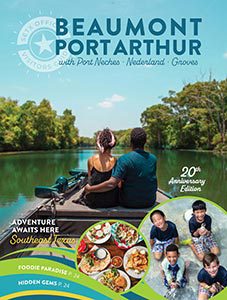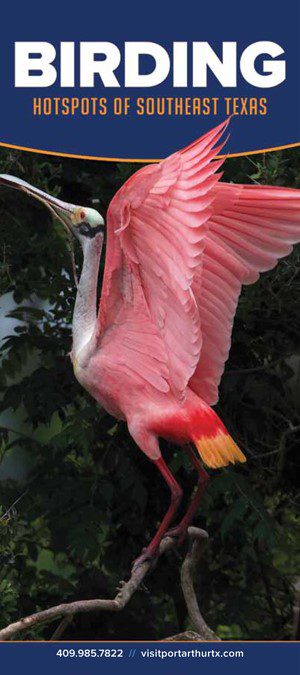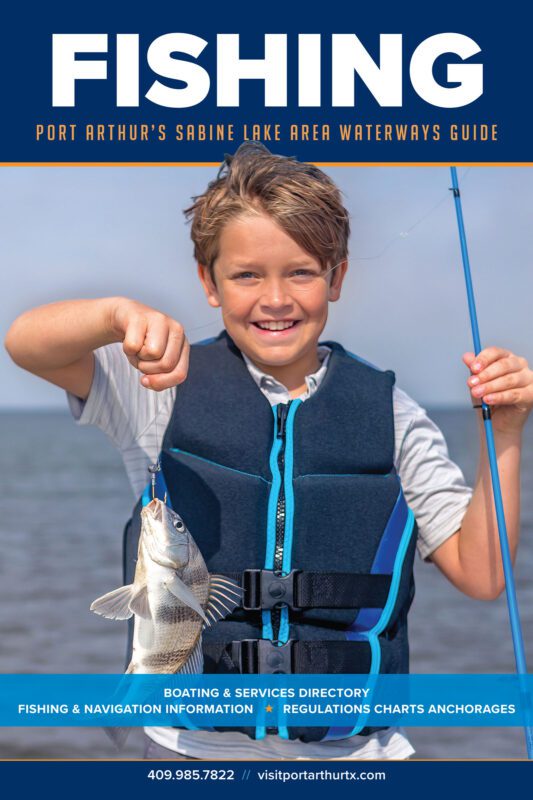Experience Spring Migration in Port Arthur, TX
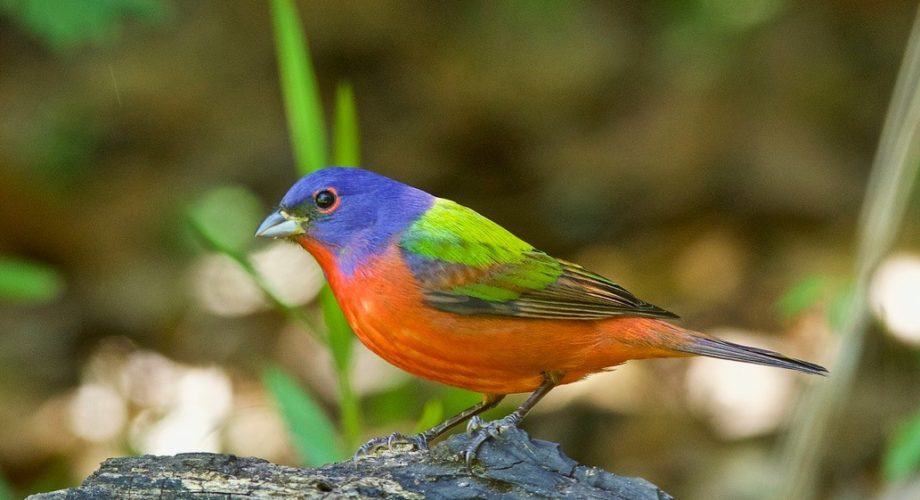
Excited Birders Migrate to Port Arthur for Spring
Request a Birding Book
Welcome birders! You’d want a break, too, if you flew in from South America.
The high oak mott of Sabine Woods is a welcoming sight for colorful songbirds after a long journey. Port Arthur is their first stop to land for food and rest. We think they’re probably excited just to be in Texas!
Spring Migration
Port Arthur draws birds from both the Central and Mississippi Flyways. This area is a hot spot for spring migration. (Do come back for fall migration!) The Upper Texas Coast welcomes northbound spring migrants from late February through mid-May. Birders of all experience levels can add to life lists at Sabine Woods. While we’re especially hot for spring and fall migration. But remember: Port Arthur has great year-round birding. Here’s look at popular Port Arthur sites:
Sabine Woods
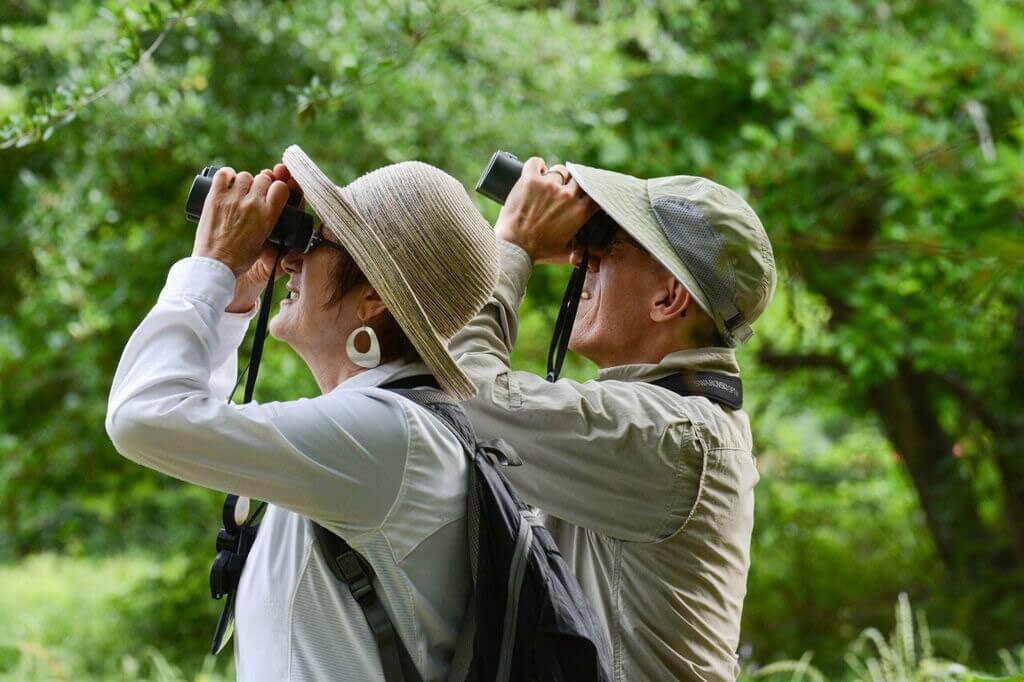
Sabine Woods packs ’em in in the Spring. Spot colorful songbirds high in leafy trees. They’re also in patches of plump mulberries. Look low in grassy fields and pecking along thick underbrush. The high oak mott is the first land they’ll see in spring. They know it’s time to stop for a bite. Colorful birds tend to spend a few days. They are fattening up for the rest of their journey.
Golden Triangle Audubon Society members keep up the grounds, 27 acres of large oaks – for the Texas Ornithological Society. Look for a covered picnic area, benches and drips. Portable potties are available during spring and fall migration.
April is the height of spring migration with the appearance of orioles, tanagers, flycatchers and vireos. Warblers are always a favorite. In March look for arriving Hooded, Prothonotary and Yellow-Throated Warblers. If it’s quiet at Sabine Woods, you can hear the Gulf of Mexico waves hitting the Texas shore.
Sea Rim State Park
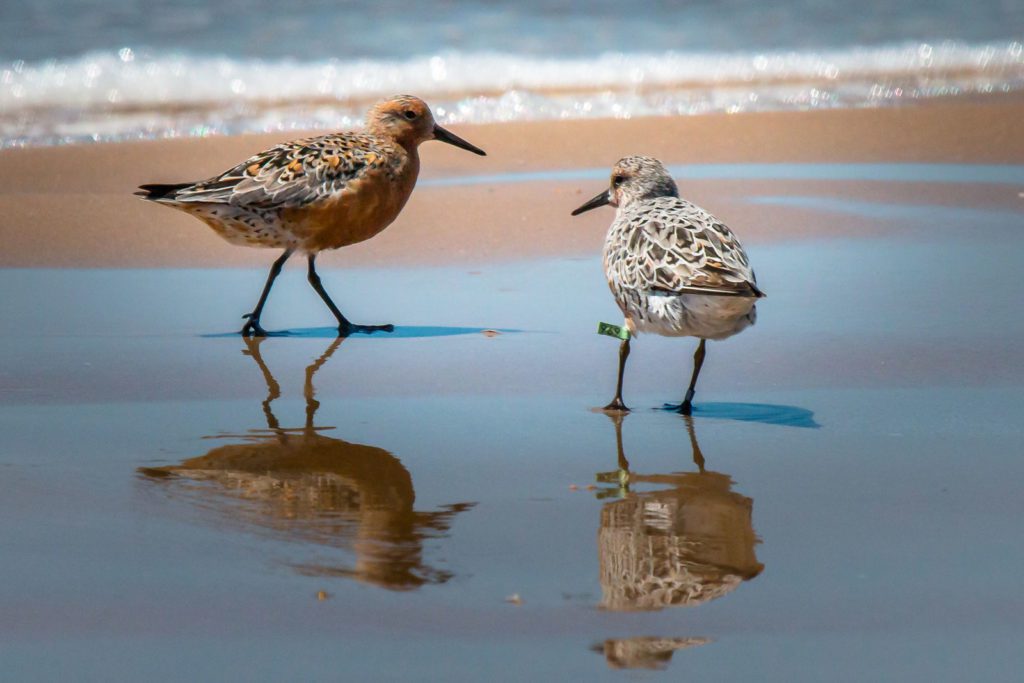
Sea Rim State Park’s has 5 miles of natural beach, down the road from Sabine Woods. The setting lets birds and birders share shore and boardwalks. Enjoy action along the Gulf of Mexico and spend time along the quieter marsh unit. Rent a kayak for the best views and a workout. Boardwalks and birding platforms add ambiance.
Get your shore birds here. In April look for Piping Plover, Snowy Plover and Semipalmated Plover. Also catch “grasspipers” such as Whimbrel, American golden Plover, Buff-breasted, Pectorial and Stilt Sandpipers.
Returning spring waterbirds include Green Heron, Least Bittern, Yellow-crowned and Black-crowned Night Herons. Roseate Spoonbill numbers increase.
Look ahead to summer at Sea Rim where Least Tern, Wilson’s Plover and Reddish Egrets will congregate. See, we told you Port Arthur is great for year-round birding.
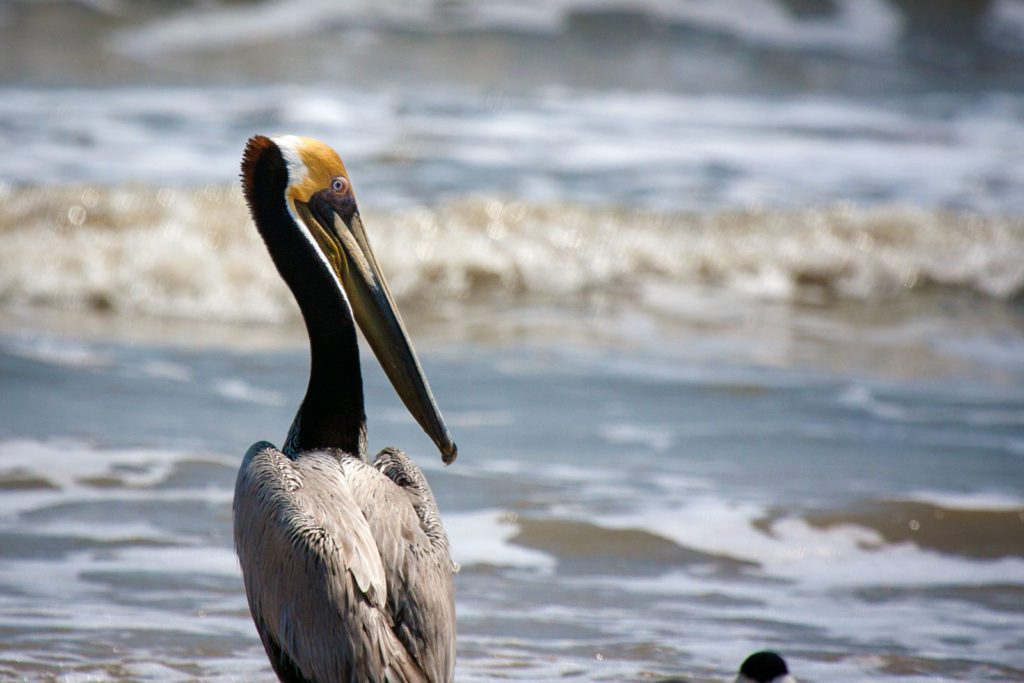
McFaddin National Wildlife Refuge
McFaddin National Wildlife Refuge, is down the road from Sabine Woods so waterbirds are among the 285 species that have been documented along the refuge’s marshy paths and lake shores. Return to visit ducks, geese and shorebirds wintering over.
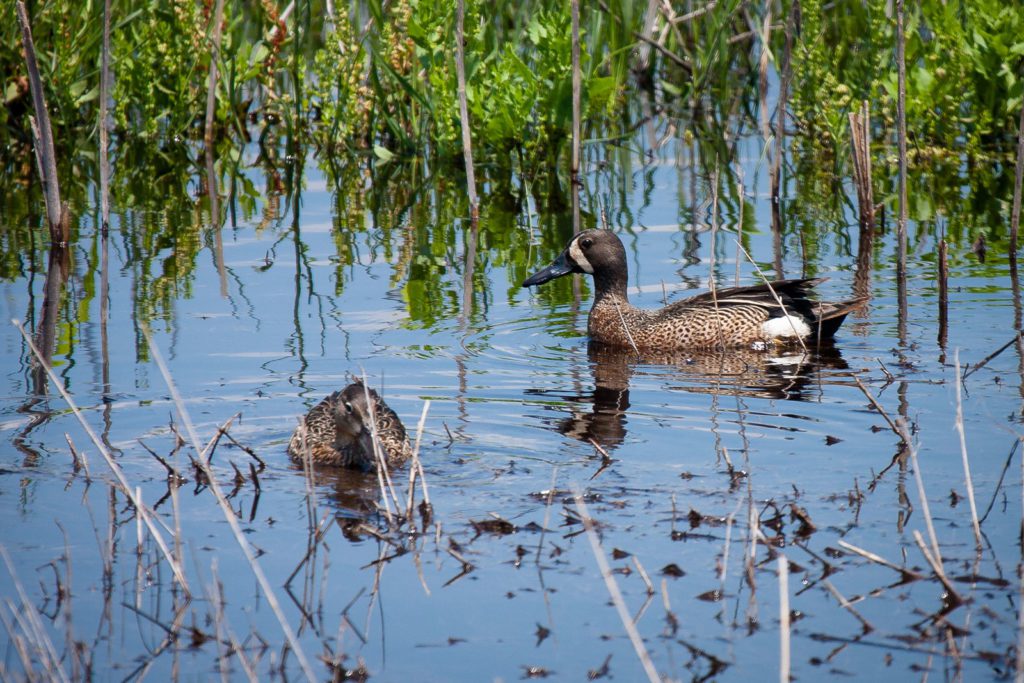
J.D. Murphree Wildlife Area
The J.D. Murphree Wildlife Area is a diverse wetland along the Texas Chenier Plain and Texas Point National wildlife refuge extends along the Gulf of Mexico shore land. Birds love tidal flats, shallow freshwater lakes and marsh influenced by daily tides.
Make sure you bird Pleasure Island, overlooking Sabine Lake, which stretches all the way to Louisiana. And, come back for fall migration. Migratory birds make Port Arthur a twice-a-year-stop.
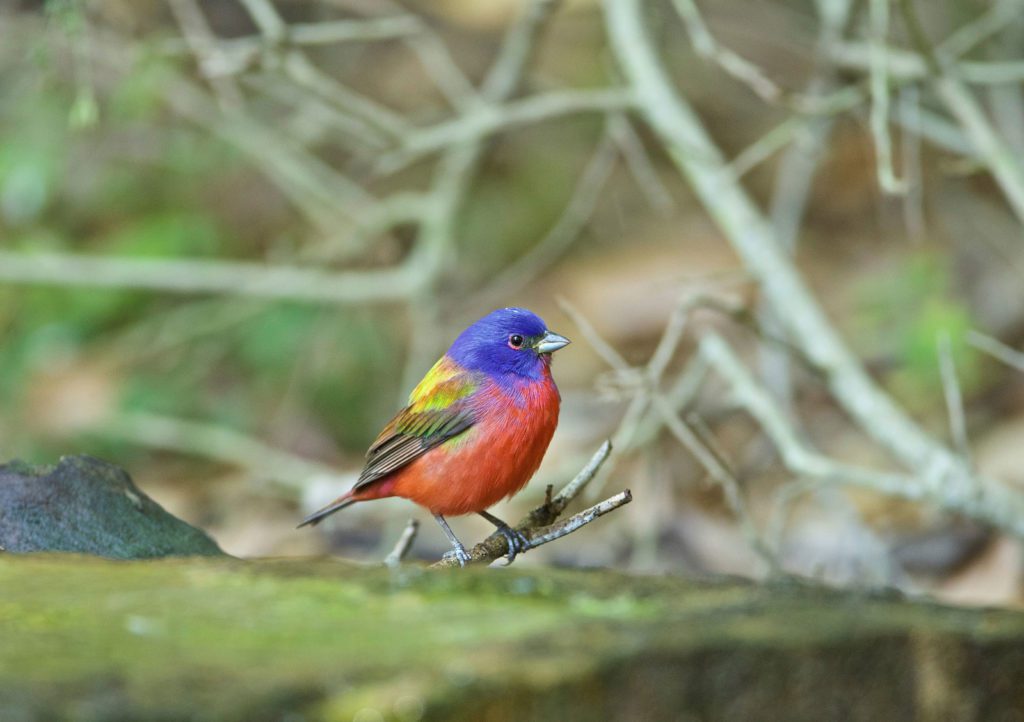
Some birds and their seasons:
From late February through Mid-May, find Northbound Spring Migrants
- Late February spring migrants include Louisiana and Northern Waterthrush and Northern Parula. Also seek some wintering birds such as Wilson’s Warbler, Yellow-Rumped Warbler and Blue-Headed Vireos.
- More warbler species arrive in March such as Hooded, Prothonotary and Yellow-Throated Warblers.
- April is the height of migration in the Port Arthur. Colorful finds include orioles, tanagers, flycatchers and vireos making stops.
- Shorebirds of April include: Piping Plover, Snowy Plover and Semipalmated Plover. Find “grasspipers” such as Whimbrel, American golden Plover, Buff-breasted, Pectorial and Stilt Sandpipers.
- Local Breeding species include Scissor-tailed Flycatcher, Eastern Kingbird and Yellow-billed Cuckoo. Also find Painted Bunting, Indigo Bunting, Yellow-breasted Chat and Great-crested Flycatcher.
- Returning spring waterbirds include Green Heron, Least Bittern, Yellow-crowned and Black-crowned Night Herons. Numbers of our famous pink Roseate Spoonbill increase.
Summer birds of the beach include: Least Tern, Wilson’s Plover and Reddish Egrets.
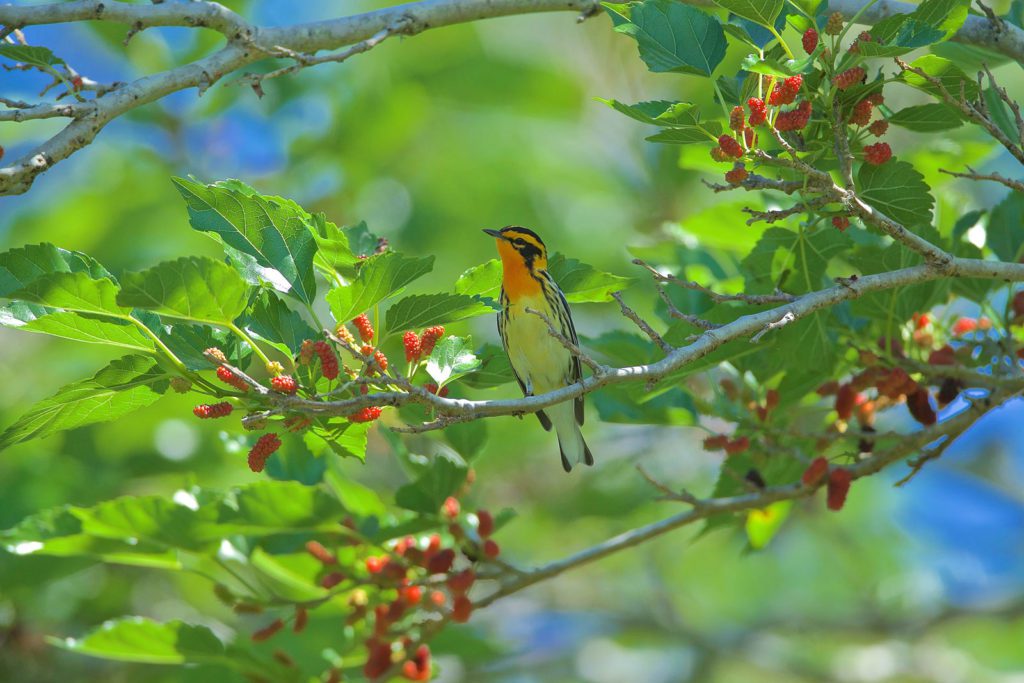
More birds of the fall:
Late August through Mid-October – Southbound Fall Migrants
- Late November through early April – Waterfowl, geese, Sandhill Cranes (they leave about February), sparrows, hawks and other raptors. Wintering landbirds include Yellow-rumped Warblers and Blue-headed Vireos
- Some birds on shore in summer include Least Tern and Wilson’s Plover
- Other shorebirds from late July to about late April include Piping Plover, Black-bellied Plover, Snowy Plover and American Avocets
- Local breeding species include Scissor-tailed Flycatchers, Eastern Kingbirds, Yellow-billed Cuckoos and Painted Buntings
- Late March through Mid-May – Northbound spring neotropical migrants
- Roseate Spoonbills and two of the three egret species are here and visible year round. Cattle Egret are fewer in numbers in December through March
We thank the Golden Triangle Audubon Society for maintaining internationally-famous Sabine Woods. Stay over in Port Arthur to enjoy additional sites.
- Cattail Marsh and Anahuac National Wildlife Refuge are at peak in winter and early spring.
- Bolivar Flats shows off shore birds all year.
- Big Thicket – This large region offers a variety of habitat. Consider Hardin County. Try it in early summer and from December through January.
- West Jefferson County is a birdy November through February.
This information is from Dr. John Whittle of the Golden Triangle Audubon Society.
(While this trip has been cancelled, Take a peek at the plan, which we hope to continue next year.) Join our April 20, 2020 Guided Birding tour of Port Arthur, part of FeatherFest in Galveston, here.

